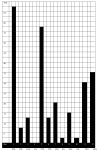The Nordic back pain subpopulation program: predicting outcome among chiropractic patients in Finland
- PMID: 18992154
- PMCID: PMC2588613
- DOI: 10.1186/1746-1340-16-13
The Nordic back pain subpopulation program: predicting outcome among chiropractic patients in Finland
Abstract
Background: In a previous Swedish study it was shown that it is possible to predict which chiropractic patients with persistent LBP will not report definite improvement early in the course of treatment, namely those with LBP for altogether at least 30 days in the past year, who had leg pain, and who did not report definite general improvement by the second treatment. The objectives of this study were to investigate if the predictive value of this set of variables could be reproduced among chiropractic patients in Finland, and if the model could be improved by adding some new potential predictor variables.
Methods: The study was a multi-centre prospective outcome study with internal control groups, carried out in private chiropractic practices in Finland. Chiropractors collected data at the 1st, 2nd and 4th visits using standardized questionnaires on new patients with LBP and/or radiating leg pain. Status at base-line was identified in relation to pain and disability, at the 2nd visit in relation to disability, and "definitely better" at the 4th visit in relation to a global assessment. The Swedish questionnaire was used including three new questions on general health, pain in other parts of the spine, and body mass index.
Results: The Swedish model was reproduced in this study sample. An alternative model including leg pain (yes/no), improvement at 2nd visit (yes/no) and BMI (underweight/normal/overweight or obese) was also identified with similar predictive values. Common throughout the testing of various models was that improvement at the 2nd visit had an odds ratio of approximately 5. Additional analyses revealed a dose-response in that 84% of those patients who fulfilled none of these (bad) criteria were classified as "definitely better" at the 4th visit, vs. 75%, 60% and 34% of those who fulfilled 1, 2 or all 3 of the criteria, respectively.
Conclusion: When treating patients with LBP, at the first visits, the treatment strategy should be different for overweight/obese patients with leg pain as it should be for all patients who fail to improve by the 2nd visit. The number of predictors is also important.
Figures


References
-
- Kent PeterM, et al. Searching for a conceptual framework for nonspecific low back pain. Man Ther. 2008 doi:10.1016/j.math.2008.07.003. - PubMed
-
- Kent PeterM, et al. Primary care clinicians use variable methods to assess acute nonspecific low back pain and usually focus on impairments. Man Ther. 2008 doi:10.1016/j.math.2007.12.006. - PubMed
-
- Leboeuf-Yde C, Hennius B, Rudberg E, Leufvenmark P, Thunman M. Chiropractic in Sweden: A short description of patients and treatment. J Manipulative Physiol Ther. 1997;20:507–10. - PubMed
LinkOut - more resources
Full Text Sources
Research Materials
Miscellaneous

